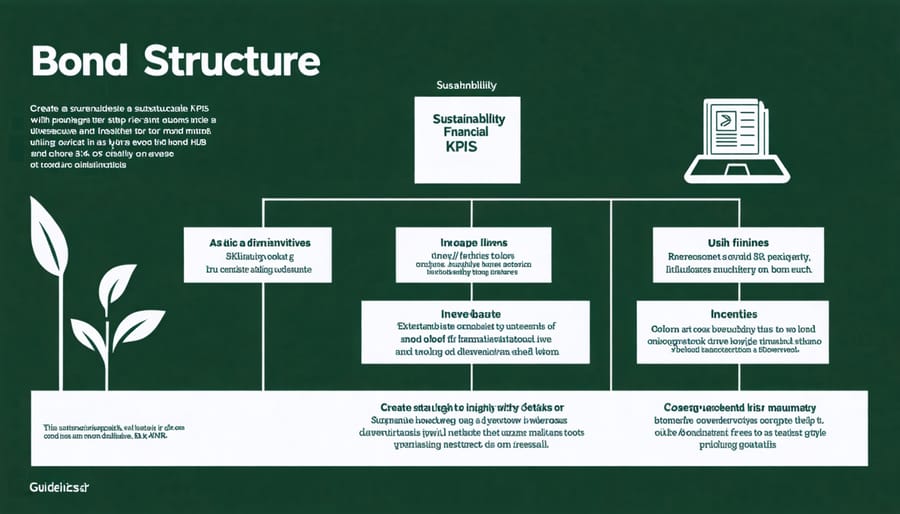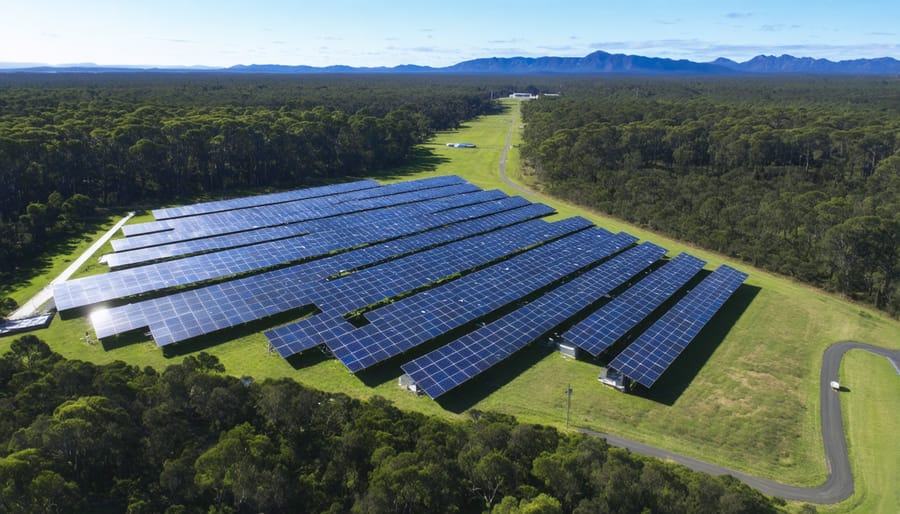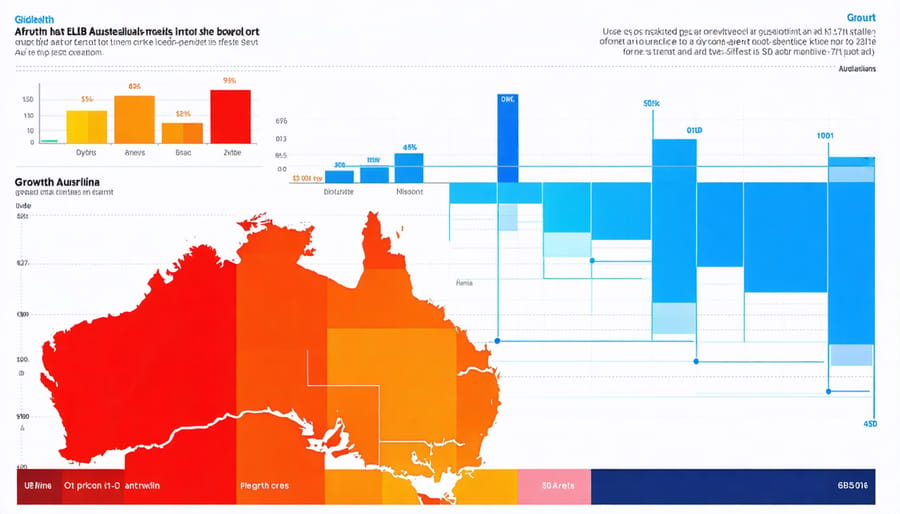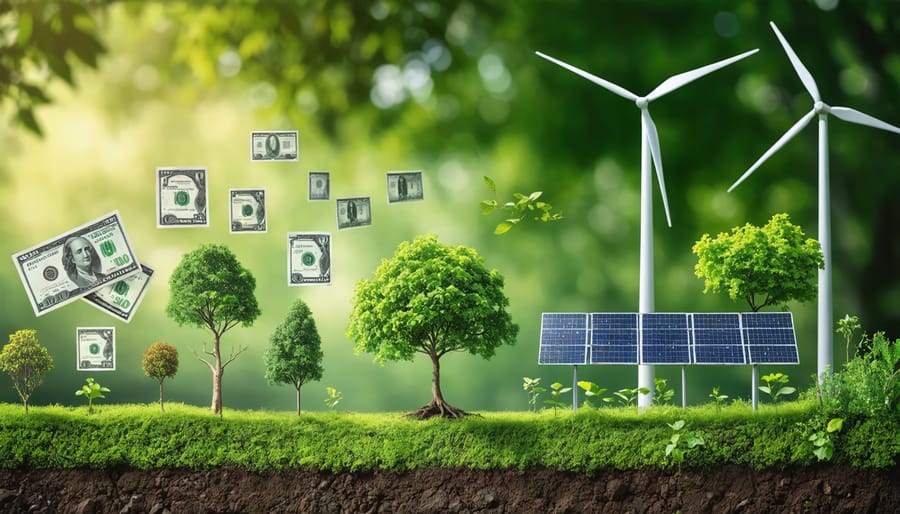Sustainability-linked bonds (SLBs) are transforming how companies finance their environmental commitments, emerging as a cornerstone of Australia’s green energy revolution. Unlike traditional green bonds, these innovative financial instruments directly tie borrowing costs to measurable sustainability targets, creating a powerful incentive for corporate environmental performance. When companies meet their pre-defined sustainability goals—such as reducing carbon emissions or increasing renewable energy usage—they benefit from lower interest rates, while missing targets triggers penalties. This pay-for-performance structure has catalyzed over $150 billion in global SLB issuances since 2019, with Australian corporations increasingly embracing these instruments to fund their sustainability initiatives.
The surge in SLB adoption reflects a fundamental shift in sustainable finance, where environmental commitments are no longer just promises but contractual obligations with real financial consequences. For investors, SLBs offer a unique opportunity to align their portfolios with measurable environmental impact while maintaining the flexibility to invest across sectors and industries committed to meaningful sustainability improvements.
The Game-Changing Features of Sustainability-Linked Bonds

Performance-Based Structure
The performance-based structure of sustainability-linked bonds represents a groundbreaking shift in sustainable finance, similar to how smart contracts for sustainable projects revolutionized green energy investments. Unlike traditional green bonds, SLBs directly link financial returns to specific sustainability performance targets (SPTs), creating a powerful incentive for achieving environmental goals.
When companies issue SLBs, they commit to predetermined sustainability targets, such as reducing carbon emissions by 30% within five years or achieving 100% renewable energy usage by 2025. The innovative aspect lies in the financial consequences: if the issuer meets or exceeds these targets, investors receive the standard return, but if targets are missed, the company faces higher interest payments as a penalty.
This structure typically includes step-up or step-down mechanisms in the coupon rate, usually ranging from 25 to 75 basis points. For example, an Australian energy company might issue an SLB with a base interest rate of 3%, which increases to 3.5% if they fail to meet their renewable energy targets. This creates a win-win situation where financial success becomes directly tied to environmental performance.
The performance metrics are independently verified by third-party assessors, ensuring transparency and accountability. This structure has proven particularly effective in the Australian market, where companies are increasingly embracing sustainable practices while maintaining financial viability.
Flexible Project Application
One of the most compelling features of sustainability-linked bonds is their remarkable flexibility in supporting diverse environmental and social initiatives. Unlike traditional green bonds that are tied to specific projects, SLBs can be deployed across multiple sustainability objectives within an organization.
In Australia, companies are leveraging this versatility to tackle various environmental challenges. For instance, major retailers are using SLBs to simultaneously fund renewable energy installations, reduce packaging waste, and improve supply chain sustainability. Agricultural businesses are implementing these bonds to finance water conservation projects alongside carbon reduction initiatives.
The flexibility extends beyond environmental projects to encompass social sustainability goals. Companies can link their bonds to targets such as workforce diversity, community development, and indigenous employment programs. This broad applicability makes SLBs particularly attractive for organizations wanting to address multiple sustainability challenges holistically.
Moreover, the adaptable nature of SLBs allows organizations to adjust their sustainability targets as new challenges emerge or technologies evolve. A mining company might initially focus on reducing emissions but later expand its goals to include water management and biodiversity protection, all under the same bond framework.
This versatility has proven especially valuable for Australian businesses operating across different sectors and regions, enabling them to tailor their sustainability commitments while maintaining financial accountability through a single financing instrument.
Real Impact: Australian Success Stories
Bioenergy Projects Leading the Way
Several groundbreaking bioenergy projects in Australia are showcasing the transformative potential of renewable energy financing through sustainability-linked bonds. The Goulburn Valley Waste-to-Energy Facility stands out as a prime example, converting agricultural waste into clean energy while meeting ambitious emissions reduction targets. This project secured $85 million through SLBs, with interest rates tied to achieving a 40% reduction in greenhouse gas emissions by 2025.
In Queensland, the Sugar Cane Biorefinery Initiative demonstrates how SLBs can support innovation in traditional industries. The facility transforms sugar cane waste into biofuel and biochemicals, creating a circular economy model that’s caught the attention of international investors. Their $120 million SLB issuance includes performance targets for water conservation and local employment opportunities.
The Western Australian Forestry Biomass Project showcases how SLBs can support sustainable resource management. This initiative uses forestry residues to generate clean energy while maintaining strict sustainability criteria. The project’s $95 million SLB includes targets for biodiversity protection and community engagement, proving that environmental and social goals can work hand in hand.
These success stories demonstrate how SLBs are helping to fast-track Australia’s transition to renewable energy. By linking financial incentives to sustainability targets, these projects are not just generating clean energy – they’re creating jobs, supporting regional communities, and setting new standards for environmental stewardship. The growing pipeline of similar initiatives suggests this is just the beginning of Australia’s bioenergy revolution.

Agricultural Transformation
Australian farmers are increasingly turning to sustainability-linked bonds to finance their transition to more environmentally friendly agricultural practices. These innovative financial instruments are helping transform traditional farming operations into sustainable enterprises while providing attractive returns for investors.
Leading the way is the Murray-Darling Basin region, where several large-scale farms have successfully issued SLBs to fund water-efficient irrigation systems and soil conservation projects. One notable example is the Riverina Agricultural Collective, which raised $50 million through SLBs to implement regenerative farming practices across 15,000 hectares of cropland.
The bonds typically link interest rates to specific sustainability targets, such as reducing chemical fertilizer use, decreasing water consumption, or increasing biodiversity on farmland. Farmers who meet or exceed these targets benefit from lower interest rates, creating a powerful incentive for sustainable transformation.
In Queensland’s sugar cane industry, SLBs are funding the transition to precision agriculture technologies that minimize environmental impact while maintaining productivity. These investments include GPS-guided machinery, soil moisture sensors, and integrated pest management systems that reduce chemical usage.
The impact extends beyond environmental benefits. Farms using SLB funding report improved soil health, reduced operating costs, and enhanced market access due to their verified sustainable practices. Many are also experiencing premium pricing for their products as consumers increasingly demand sustainably produced food.
For smaller family farms, agricultural cooperatives are aggregating SLB issuances, making sustainable financing accessible to operations of all sizes. This collaborative approach is helping create a more resilient and environmentally responsible farming sector across Australia.
Making SLBs Work for Your Project
Key Requirements and Considerations
To successfully issue a sustainability-linked bond, organizations must meet several key requirements and carefully consider various factors. First and foremost, issuers need to establish clear, measurable sustainability performance targets (SPTs) that align with their overall environmental and social goals. These targets should be ambitious, meaningful, and demonstrate a genuine commitment to sustainability improvement.
The bond structure requires robust key performance indicators (KPIs) that can be independently verified and monitored throughout the bond’s lifetime. Common KPIs include greenhouse gas emissions reduction, renewable energy adoption rates, or waste management improvements. Importantly, these metrics must be regularly reported and transparently communicated to investors.
Organizations should also prepare comprehensive documentation, including a sustainability-linked bond framework that outlines the bond’s structure, objectives, and reporting mechanisms. This framework needs to align with international standards, such as the International Capital Market Association’s Sustainability-Linked Bond Principles.
Financial considerations are equally important. Issuers must determine appropriate step-up or step-down mechanisms in the bond’s coupon rate, which will activate if sustainability targets are met or missed. This requires careful financial modeling and risk assessment to ensure the incentive structure is both meaningful and manageable.
External verification from qualified third-party assessors is essential, both pre-issuance and during the bond’s lifetime. This provides credibility and transparency to investors while ensuring compliance with stated objectives and market standards.
Setting Achievable Sustainability Targets
Setting meaningful sustainability targets is crucial for the success of sustainability-linked bonds. The key performance indicators (KPIs) should be ambitious yet achievable, creating a balance that motivates genuine environmental progress while remaining within realistic bounds.
A well-structured approach begins with establishing baseline measurements of current environmental performance. Organizations should analyze their historical data and industry benchmarks to understand where they stand and what improvements are feasible. This groundwork helps in setting targets that push boundaries while remaining attainable.
Best practices for target-setting include:
– Ensuring targets align with recognized international frameworks like the Paris Agreement or UN Sustainable Development Goals
– Creating specific, measurable objectives with clear deadlines
– Setting intermediate milestones to track progress
– Including both short-term and long-term goals
– Incorporating stakeholder feedback in the target-setting process
Australian companies have shown leadership in this area, with many adopting science-based targets. For instance, several major Australian corporations have successfully implemented sustainability-linked bonds with targets focusing on renewable energy adoption, carbon emissions reduction, and water conservation.
To maintain credibility, organizations should engage independent third-party verifiers to assess and validate their targets. This external validation adds transparency and builds investor confidence in the sustainability-linked bond framework. Regular reporting and updates on progress towards these targets help maintain accountability and demonstrate commitment to achieving environmental goals.

The Future of Green Finance in Australia
Australia stands at the cusp of a green finance revolution, with sustainability-linked bonds (SLBs) playing an increasingly pivotal role in shaping the nation’s sustainable future. Market analysts predict that the Australian SLB market could reach $50 billion by 2025, driven by growing investor demand and corporate commitment to environmental goals.
The emergence of innovative financing mechanisms, including blockchain-enabled sustainability initiatives, is transforming how companies structure and verify their environmental commitments. These technological advancements are making SLBs more transparent and accountable, attracting a broader range of investors.
Major Australian superannuation funds are increasingly incorporating SLBs into their portfolios, recognizing their potential for both financial returns and positive environmental impact. This shift is creating a ripple effect, encouraging more companies to consider SLBs as a viable financing option for their sustainability initiatives.
The future outlook is particularly promising in sectors like renewable energy, sustainable agriculture, and green infrastructure. Several ASX-listed companies are already developing SLB frameworks that align with Australia’s commitment to net-zero emissions by 2050. These pioneers are setting benchmarks for others to follow, creating a more mature and sophisticated market.
Looking ahead, we can expect to see more innovative SLB structures that incorporate multiple sustainability targets, reflecting the complex nature of environmental challenges. The integration of Indigenous land management practices and biodiversity conservation into SLB frameworks is emerging as a uniquely Australian approach to sustainable finance.
The regulatory environment is also evolving favorably, with the Australian Securities and Investments Commission (ASIC) developing clearer guidelines for sustainable finance products. This regulatory clarity, combined with growing market expertise, is expected to make SLBs more accessible to medium-sized enterprises, not just large corporations.
The convergence of these factors positions Australia to become a leader in sustainable finance in the Asia-Pacific region, with SLBs serving as a cornerstone of this transformation. As the market matures, we’re likely to see more standardization in measurement and reporting, making these instruments even more attractive to international investors.
As Australia navigates its path toward a sustainable future, sustainability-linked bonds stand as a powerful catalyst for transformative change. These innovative financial instruments are reshaping the way businesses approach environmental and social responsibilities, creating a ripple effect across industries and communities. The success stories we’ve seen, from renewable energy projects in regional areas to sustainable infrastructure developments in our major cities, demonstrate the tangible impact SLBs can have on Australia’s sustainability journey.
Looking ahead, the potential for SLBs to drive meaningful change is immense. As more organizations embrace these bonds, we’re likely to see accelerated progress toward our national sustainability goals, improved environmental outcomes, and stronger social initiatives. The flexibility and accountability built into SLBs make them particularly well-suited to the Australian context, where diverse challenges require tailored solutions.
For businesses considering sustainable finance options, SLBs offer a practical pathway to align financial success with positive impact. They represent more than just a funding mechanism – they’re a statement of commitment to a better future and a tool for driving genuine organizational change.
The growing adoption of SLBs in Australia signals a significant shift in how we approach sustainable development. As we face the challenges of climate change and social equity, these bonds provide hope and a concrete way forward. Their continued evolution and implementation will play a crucial role in building a more sustainable and resilient Australia for future generations.

